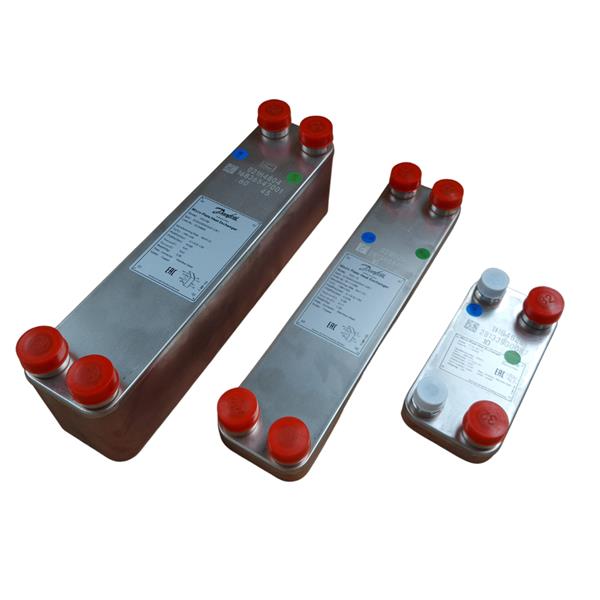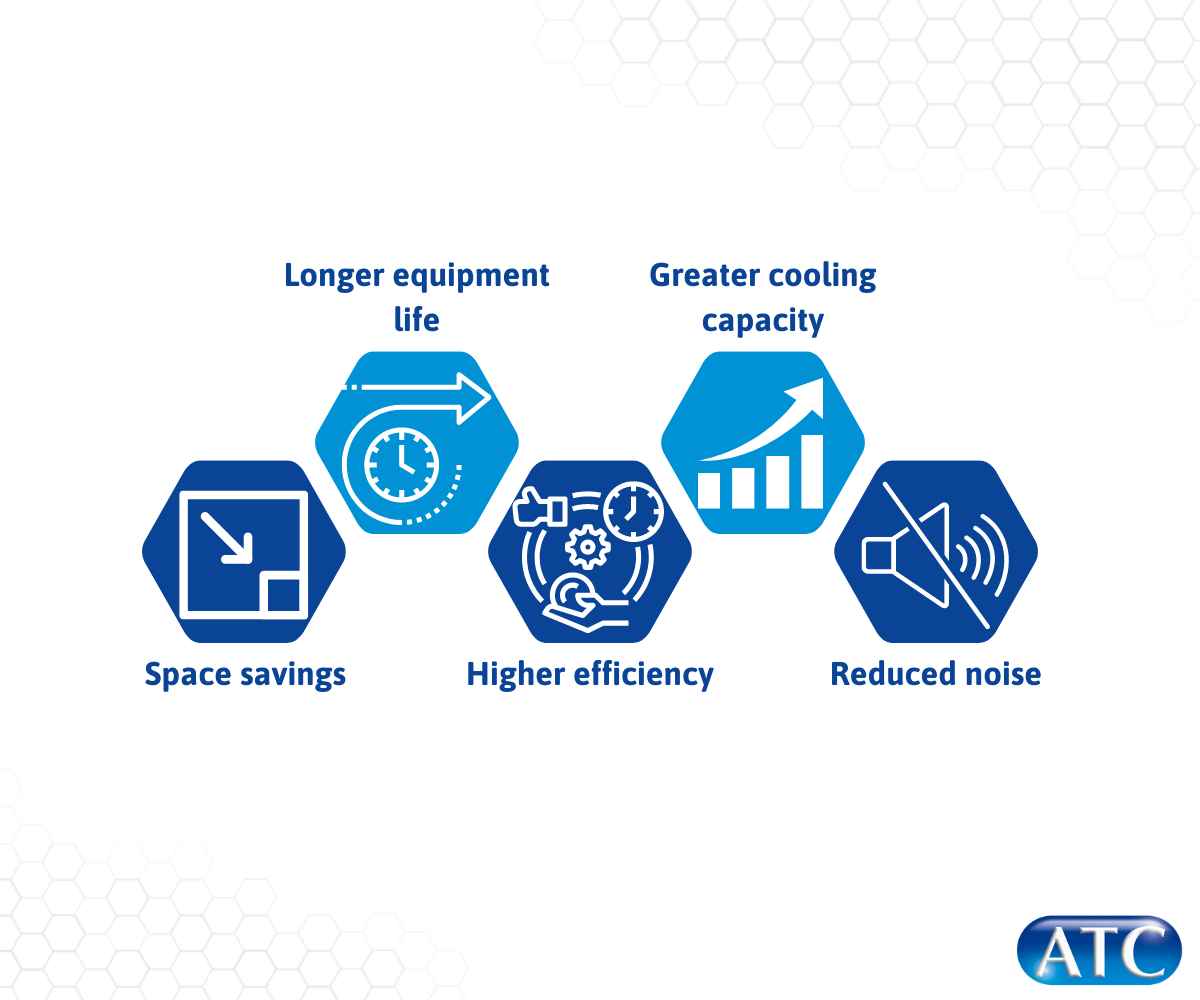
Water-cooled condensers are commonly used in chillers to
remove heat from the refrigerant and transfer it into a primary cooling
circuit. In a recirculating chiller system, the refrigerant absorbs heat from
the process or space, and transfers it to the water-cooled condenser.
Water-cooled condensers work by transferring heat from the
refrigerant to the cooling water. The refrigerant enters the condenser as a
high-pressure, high-temperature vapor, and flows through a series of tubes
within the condenser. As the refrigerant flows through the tubes, it gives off
heat to the cooler water that surrounds the tubes. This causes the refrigerant
to condense from a vapor to a liquid.
The cooling water is typically supplied by a separate
system, such as a cooling tower or primary water circuit, that circulates water
through the condenser. The water absorbs heat from the refrigerant and exits
the condenser as a warmer stream. The warmed water is then either discharged to
a drainage system, or recirculated back to the cooling tower to be cooled and
reused in the condenser.
Water-cooled condensers can be designed in a variety of
configurations. Applied Thermal Control have selected plate-and-frame
condensers, in which thin metal plates are stacked together to create a series
of narrow channels through which the refrigerant and cooling water flow. This
design provides a very high surface area for heat transfer in a compact space.
There are several benefits to using a water-cooled condenser
in a recirculating chiller:

Higher efficiency:
- Water-cooled
condensers can achieve higher levels of efficiency compared to air-cooled
condensers, because water has a higher heat capacity and thermal conductivity
than air. This means that a water-cooled condenser can transfer more heat from
the refrigerant to the cooling water, resulting in greater cooling capacity and
lower energy consumption.
Space savings:
- Water-cooled
condensers can be located indoors, making them a good choice for applications
where outdoor space is limited, or where noise from the chiller system must be
minimized. This also means that they are less susceptible to variations in
ambient temperature and humidity, which can affect the performance of
air-cooled condensers.
Longer equipment life:
- Water-cooled
condensers typically have a longer lifespan than air-cooled condensers, because
they are not exposed to the same harsh outdoor conditions, such as wind, rain,
and debris. They also require less maintenance, as they do not accumulate the
same levels of dirt and debris that can clog air-cooled condensers.
Reduced noise:
- Water-cooled
condensers are generally quieter that air-cooled condensers, because they do
not have large fans create noise as they operate. This reduction in air
movement near the chiller is particularly useful in clean room conditions. Because the heat is removed into the primary water circuit rather than into the surrounding air, it is not necessary to upgrade the building's air conditioning system.
Greater cooling capacity:
- Water-cooled
condensers can handle higher heat loads than air-cooled condensers, because
water has a higher heat capacity and can absorb more heat than air. This means
that they can be used in larger and more demanding applications where
air-cooled condensers may not be sufficient.
While water-cooled condensers offer several benefits, there
are also some drawbacks to using them in a recirculating chiller system:
Higher cost:
- Water-cooled
condensers typically have a higher upfront cost compared to air-cooled
condensers, due to the need for additional equipment such as a cooling tower or
primary cooling circuit, pumps and piping. This can make them less
cost-effective for smaller or less demanding applications.
Water consumption:
- Water-cooled
condensers require a constant supply of cooling water, which can be expensive
to provide and maintain. This can be a significant drawback in areas where
water is scarce or where the cost of water is high. This can be mitigated with
use of a primary cooling circuit, as the cooling water recirculates within a
closed loop.
Maintenance:
- Water-cooled
condensers require regular maintenance to ensure that the cooling water is
clean and free from contaminants. This can involve regular cleaning and
chemical treatments, as well as monitoring for leaks and other issues.
Complexity:
- Water-cooled
condensers are more complex to install and may require additional plumbing and
electrical work to connect to the cooling water supply. This can add to the
installation cost and may require specialized expertise to ensure proper
connection.
Water-cooled condensers are typically used in chiller
systems where high cooling capacity is required and where space is limited, or
outdoor installation is not feasible. However, their higher upfront cost and
maintenance requirements may make them less cost-effective for smaller or less
demanding applications. The decision to use a water-cooled condenser should be
based on a careful analysis of the specific application and its cooling
requirements.
Water-cooled KT chillers require at least 6 liters/min cooling
water at less than 25°C, with a differential pressure across the chiller of 1 bar.
Water-cooled K1, K3, K4, K6, K9 and K12 chillers require at
least 10 liters/min cooling water at less than 26°C, with a differential
pressure across the chiller of 1 bar.